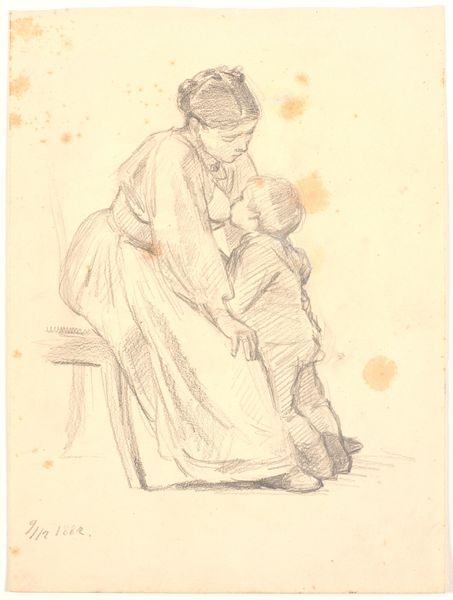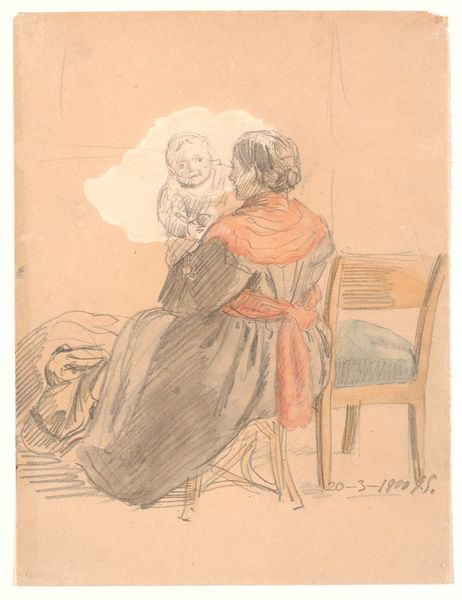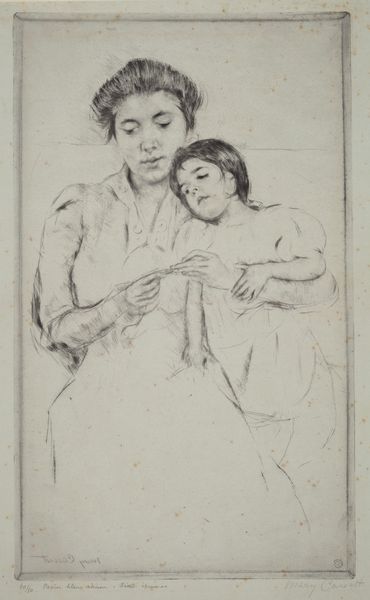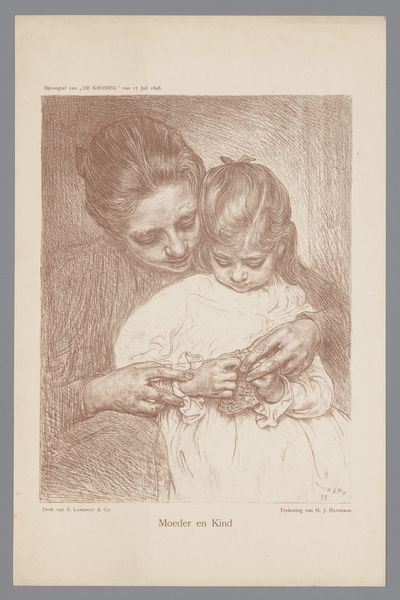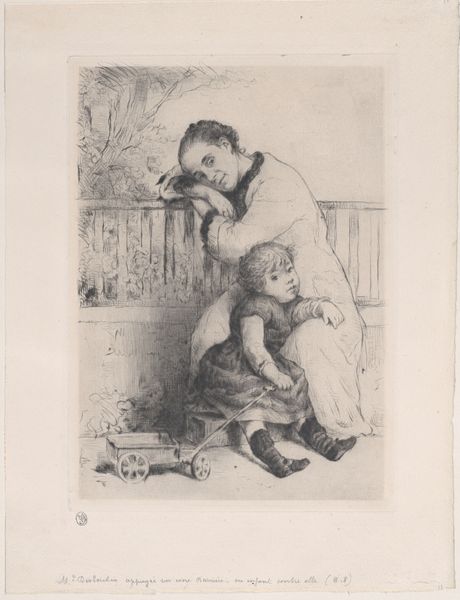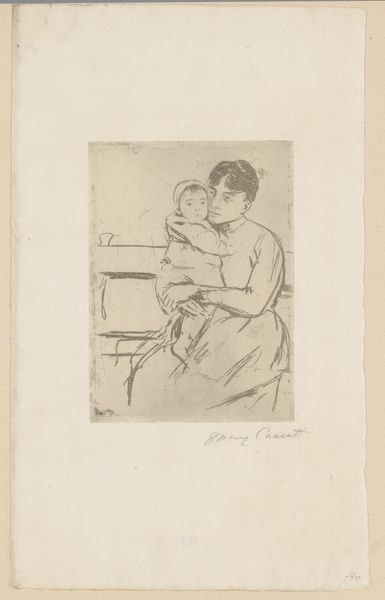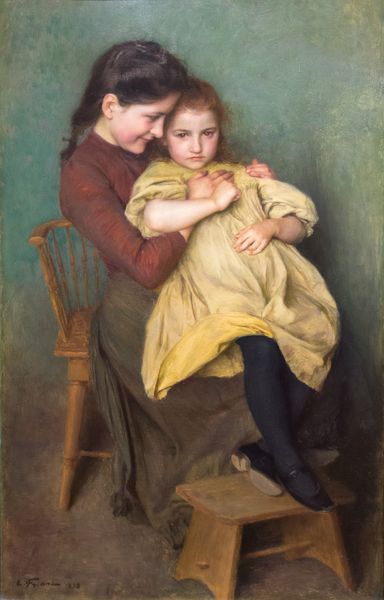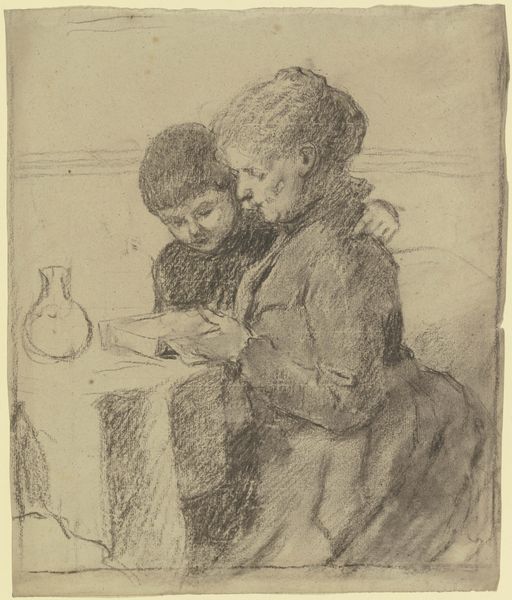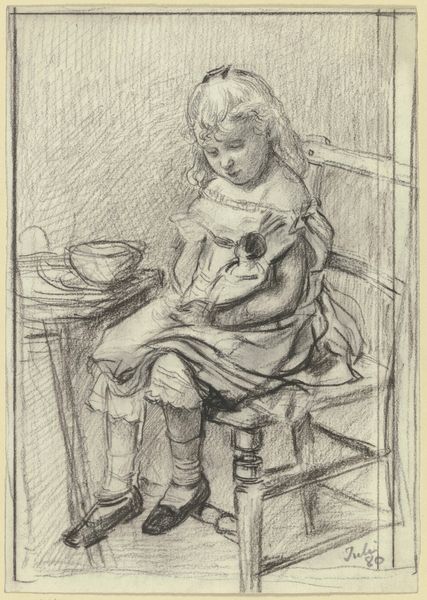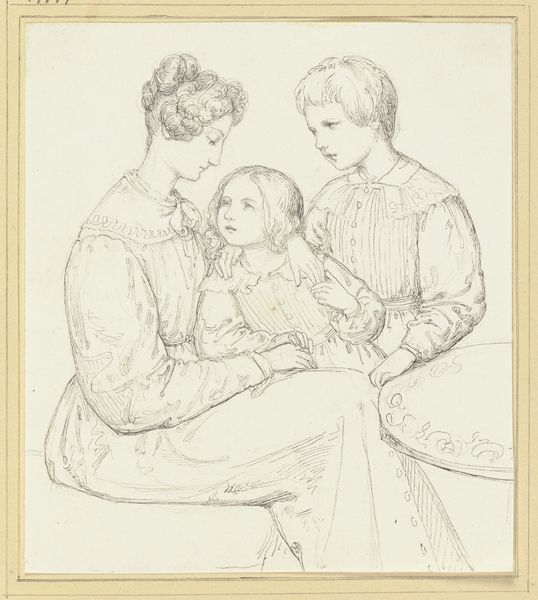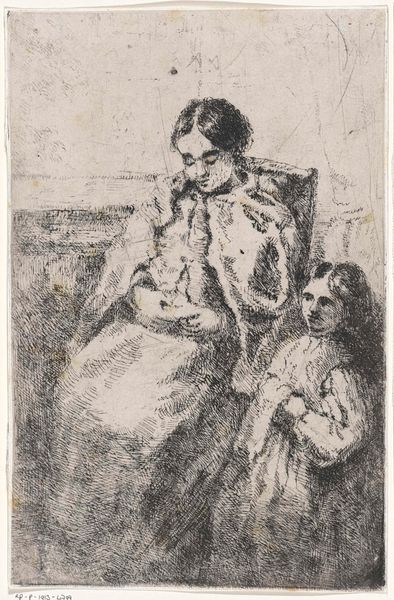
drawing, pencil
#
portrait
#
drawing
#
pencil sketch
#
pencil drawing
#
pencil
#
portrait drawing
#
genre-painting
#
academic-art
#
watercolor
#
realism
Copyright: Public domain
Curator: What we have here is a work titled "A Child's Sorrow" created in 1897 by Émile Friant. Editor: It's incredibly tender, isn't it? There's a sense of fragility that comes across immediately. The limited color palette of pencil on paper almost feels like a faded photograph, lending an added layer of poignancy. Curator: Friant, a key figure in the naturalist movement, often depicted scenes of everyday life with a strong social commentary. This work could reflect contemporary concerns about childhood vulnerability within rapidly changing societal norms of the late 19th century. Editor: Look at how the cross-hatching defines the fabric of the older girl's dress. It grounds the work in tangible reality. Even the little wooden stool under the child's feet feels deliberately included, providing a context of labor, making a material connection between the artwork, subject, and the viewers lived experiences. Curator: I agree, and it’s precisely that grounded realism which gives his academic training a real cutting edge. But note also, the dynamic between the girls; it could be read as an implicit commentary on domestic roles assigned to women, specifically working-class women, at the time. The drawing is suggestive of the older girl assuming responsibility for childcare. Editor: I find it striking how he's focused the drawing tightly on the two figures, excluding almost everything else. It forces you to examine the fine details of their clothes and poses –the rough wool stocking against the crispness of the dress fabric is beautifully contrasted. It certainly emphasizes class differences of the time. Curator: The very act of producing genre scenes became an engagement with modernity. Friant helped establish these depictions within academic painting and integrated the marginalized working classes as subjects into a sphere generally limited to idealized figures or wealthy citizens. Editor: This drawing invites us to meditate not only on personal emotional states, but also how they relate to larger socio-economic situations. It forces one to consider class and gender through materiality in relation to artistic vision. Curator: Well, it certainly gives you a lot to consider about the artist's intention and broader societal themes. Editor: Yes, there is certainly more than just an immediate emotive experience captured here, looking closely brings social considerations into the picture.
Comments
No comments
Be the first to comment and join the conversation on the ultimate creative platform.
